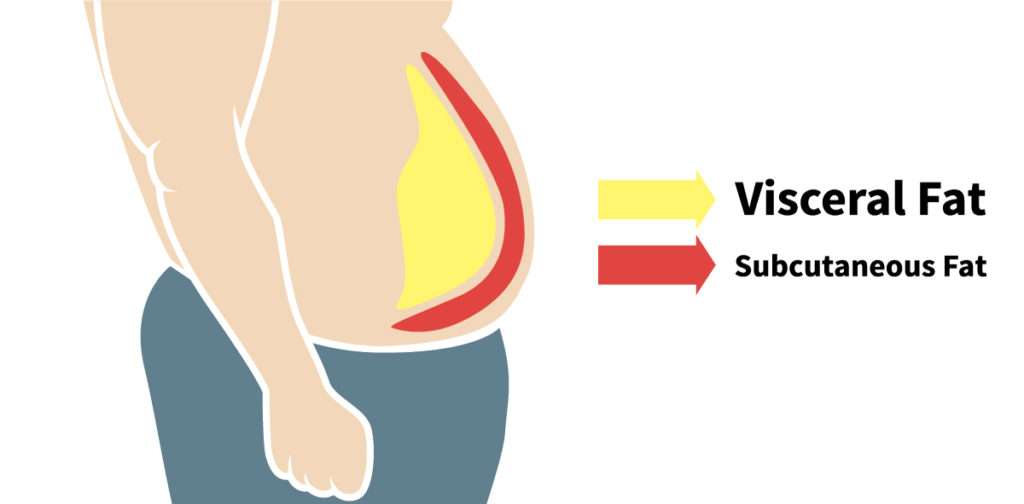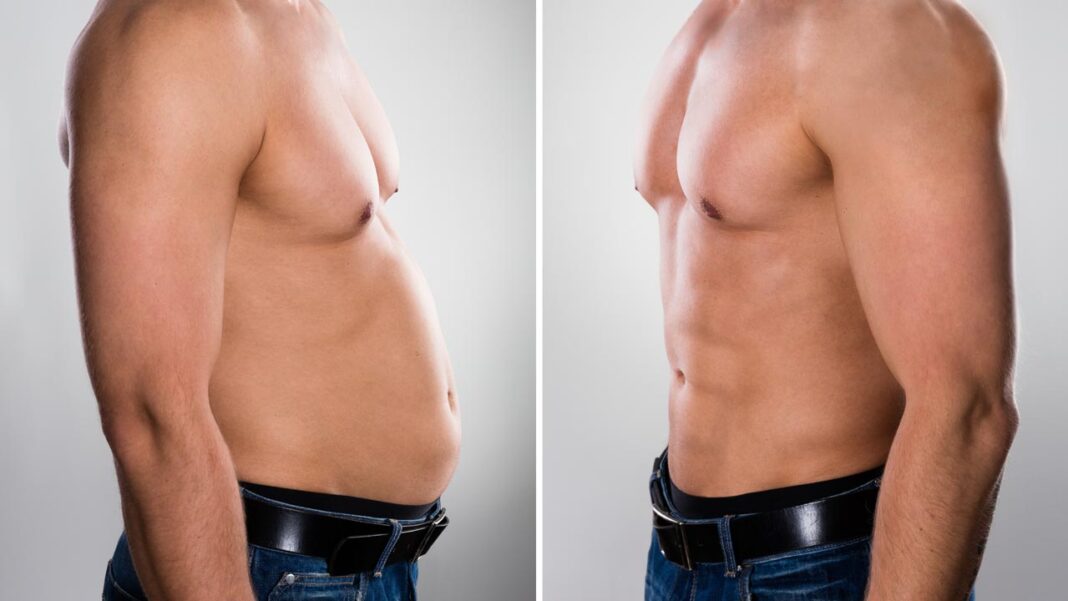Subcutaneous Fat
What Is Subcutaneous Fat?
If you are interested in healthy living and fitness, you probably understand that there are different kinds of fat in the human body. However, for the benefit of those who might not know- there are three major types of fat in the human body-essential, subcutaneous, and visceral.
Let us break it down for you if you are feeling confused. Essential fats are the fats we get from food and are needed for our daily functioning, which is why they are called essential fat. Subcutaneous fat, on the other hand, is the fat that you can feel directly below your skin; in other words, you can pinch this fat.
Visceral fat, on the other hand, can be found around your organs and is rather harmful and can increase the risk of cardiovascular diseases. While visceral fat is more on the harmful side, subcutaneous fat is there for protection.
For example, the jiggly fat in your thighs, butt, and legs is subcutaneous fat and is protective of the bones. But how exactly does subcutaneous fat provide protection? Read on to find out.

How Does Subcutaneous Fat Provide Protection?
The primary function of Subcutaneous fat is to protect the bones present. Imagine if you fall and have little to no padding for your bones. What is likely to happen- you guessed right, severe bone damage.
Subcutaneous fat protects your bones by acting as flesh padding. So in case of any physical shock, most of the impact is handled by the fat region, and your bones are safe. Apart from acting as a padding region, there are other ways that subcutaneous fat can provide protection.
The body uses fatty regions to store energy, so in cases where you don’t consume food for prolonged periods, the body uses this reserve energy for functioning. It becomes extremely useful in extreme situations when food becomes unavailable.
Additionally, subcutaneous fat can also help regulate the body’s temperature. You might have heard of Arctic animals like Polar bears having a very high amount of fat in their bodies. Their high fat content helps them to survive the extreme cold by providing insulation (warmth).
It is the same trick here- when the temperature gets cold, your body relies on subcutaneous fat to protect you by providing warmth.
Apart from these essential functions, subcutaneous fat regions in your body are also a region that serves as a passage for the blood vessels. Nerves also pass through these regions; both blood vessels and nerves are connected to the skin and muscles.
What Causes Subcutaneous Fat?
You might be curious as to what causes subcutaneous fat to form in the body. Everyone is born with some amount of subcutaneous fat in their bodies.
With time, your body grows and develops, and so the amount of subcutaneous fat varies from person to person.
The subcutaneous fat in an individual depends primarily on genetics and the lifestyle you adopt, and your physical activity.
Some people contain more subcutaneous fat than others. In contrast, some people generally contain very little subcutaneous fat.
Depending on the body type and the normal weight of a person, it is possible to develop excess subcutaneous fat in the body. However, too much of this fat can lead to health issues. There are many ways people can gain more subcutaneous fat, like:
- Sedentary lifestyle: A lifestyle where you are consuming more calories than you are burning can lead to subcutaneous fat deposits and typical weight gain. There should always be a balance between physical activity and calorie intake.
- Diabetes: Diabetic people gain more subcutaneous fat over the years than non-diabetic people. Also, the gaining of more fats in the body (weight gain) can worsen the diabetic conditions of a person.
- Insulin resistance: Pre-diabetic and diabetic people are more or less insulin-resistant, leading to a rise in blood sugar levels. Elevated blood sugar levels, in turn, give rise to weight gain via more subcutaneous fat deposits. Thus, it is easier for diabetic and insulin-resistant people to gain subcutaneous fat than others.
- Bad Calorie intake: Poor diet choices are another way people gain weight. Too many calories can lead to weight gain, especially when you do not perform any physical activity to burn them.
How To Know If You Have Excess Subcutaneous Fat?
Many people who have a sedentary lifestyle or who do not eat healthily or perform physical activities tend to think that they are fine. But they are always accumulating Subcutaneous fat in their body via their lifestyle.
Often, people do not know how to understand if they have excess subcutaneous fat and if they need to reduce it. Body-Mass Index is a simple and easy way of determining if you are overweight.
The ratio of your weight to your height is an excellent parameter by which you can judge if you need to lose weight or not. Apart from that, just measuring your waist size with an inch tape should give you an idea of whether you need to get fitter or not.
A waist size higher than 38-40 in the case of men is risky, and for women, a waist size crossing 35 inches can be risky.
How Do You Get Rid Of Subcutaneous Fat?
So how exactly should you attempt to eliminate the excess subcutaneous fat in your body? Well, there are many ways; however, the most organic and natural way is via increasing your physical activity and taking care of your diet.
Include more leafy greens, nuts, avocados, dairy products (if you are not lactose-intolerant), fish, and other healthy proteins in your diet. Tofu is a good choice for vegans and is very nutritious indeed.
As for physical activity, try to begin small, but be steady in your goal. Go for walks or skip if you prefer. Cycling is also a great way to burn the excess fats in your legs. However, do remember not to strain too much and only gradually increase your physical activity time.



